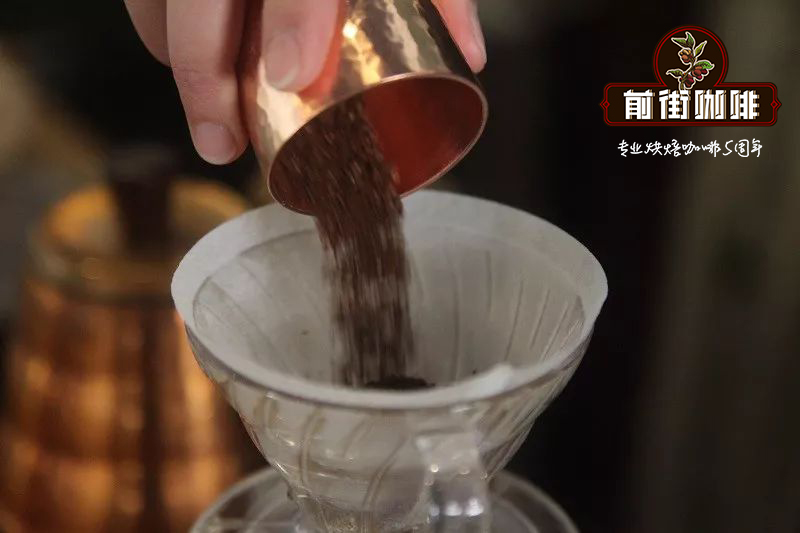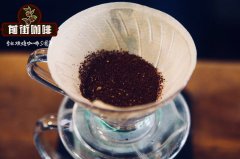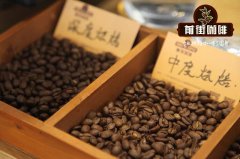The Coffee Story of the Yega Snow processing Factory in Ethiopia _ introduction to the flavor of coffee beans

Professional coffee knowledge exchange more coffee bean information please follow the coffee workshop (Wechat official account cafe_style)
Before we talk about the Ethiopian coffee processing plant Chelelektu, it seems that we have to talk about the Cochele producing area (that is, Kochere, which is commonly misinterpreted by domestic operators as Kochel).
The Cochele producing area, under the ECX's production area classification system, is one of the four producing areas of Yega Chet (i.e. Yirgacheffe, Wenago, Gelena Abaya and Kochere). As far as the administrative area is concerned, the Cochelle production area covers a total of two Woreda, that is, the Woreda itself and Gedeb**. At the southern end of the Yega Snow producing area, Cochelle and Godibe form two pillars, one west and one east, but it is not surprising that Woreda, which is historically independent from Cochele, is located in the same production area. Sometimes, we call Godibe a micro-production area independently, and it is worth noting that Worka Kebele in the Gedeb Woreda district has come to the fore frequently, and there is a tendency to be called independently.
In today's Kechalei producing area, the largest town / village or settlement is the snow map, which is located about 18 kilometers southwest of the town of Yejia, traveling south from the town of Yejia and climbing all the way to a fork in elevation. when you come to a fork in the road, go to the right to the direction of the snow map, and to the southeast on the left will lead you to Godibe and Waka.
Xuelitu is a fairly large settlement, which pales in comparison with the town of Ye Jia Xue Fang. There are also many batches in the name of Xuelitu. Most of the processing plants near Xuelitu may be called Xuelitu. In fact, there are two processing plants in Xuelitu town, but we haven't found any favorite batches here this year. This time the Mestawot Asefa treatment plant, which is slightly north of the town center and even farther than Beloya, is introduced.
During the first cup test in Ethiopia this year, the editor was deeply attracted by the flavor of the processing plant and was listed as a must-visit processing plant. We left Yega Snow Coffee's restaurant at more than 7 o'clock in the morning, visited two processing plants, and then set off for the snow map. The elevation of the town of Yejia Xue Fang is about 1800 meters above sea level. Along the way to the south, the elevation tends to be higher (at the intersection to turn left to the Guji producing area of Oromia Region, the elevation is even as high as 2450 meters). The clear sky is thousands of miles up, although it is bumpy all the way, but still very happy.
First of all, we present a panoramic picture of the processing plant (figure 1), and the shooting point is located in the position of the red dot in the Google satellite aerial photo (figure 2). The owner of the processing plant was too old to come in person that day, but his son Debo (figure 3) came to receive us. The topography of the snow map processing plant is somewhat similar to the Aricha/Idido we have introduced. It is on both sides of a slope across the valley, with a higher terrain at the entrance (on the west side of the photo), a downhill before the end, and a rise of sun scaffolding along the slope after crossing the stream.
The sun treatment method of the Xueli map processing plant is also a meticulous sun treatment method, so it is no wonder that it is eye-catching in the cup test in the capital. The thickness of the stack of coffee cherries on the scaffolding is properly controlled (figure 4), and different breathable materials are taken as the bottom of the sun scaffolding according to different drying stages (figure 5 and figure 4). In the drying process, intensive manual removal of defects and immature beans (figure 6), in addition, the snow map processing plant also uses a movable scaffolding (figure 7), which can be moved according to sunshine and weather to adjust the sun drying operation. The result of continuous care for 15 to 21 days is the charming and uniform color of dried berries in the photo (figure 8), that is, the cup in our hands, with the fragrance of jasmine at high altitude, warm and intense aroma of fruit juice and wine, charming sun-dried snow coffee!
Ethiopian Coffee-Yega Snow Coffee list
□ producing area: Yega Xuefei / Cochel / Xueqian map
□ producer: regional smallholder / Mestawot Asefa treatment plant
□ altitude: 1850 Murray 2100m
□ variety: Heirloom native species
□ treatment: sun exposure
□ flavor description: raisins, dark berries, tropical fruits and caramel, delicate finish.
Yejia Xuefei snow map large-scale sun field
□ snow map (Chelelektu), as far as administrative division is concerned, is a village in Kochere, the most famous producing area in the Yegashefi area, and it is a fairly large village. According to the description of PEBBLE COFFEE international procurement personnel: "the snow map is located at a straight line distance of about 18 kilometers southwest of Yega Xuefe, heading south from Yega Sheffield, about 1800 meters above sea level, climbing all the way to a fork in the road, walking on the right to the direction of the snow map, and going left to the southeast will lead you to Godibe and Waka."
As the snow map is a large settlement, there are many batches in the name of snow map. The beans come from the Mestawot Asefa processing plant in Mestaway, north of the city center. Generally speaking, the sun treatment method of the snow map processing plant is quite meticulous in the whole Yega Xuefei area. If the thickness of the stack of coffee cherries on the scaffolding is properly controlled, different materials with different permeability will be taken as the bottom of the scaffolding according to different drying stages, and the defects and immature beans will be picked out intensively during the drying process. The most special thing is that the snow map processing plant will use a movable scaffolding, which can adjust the sun-drying schedule according to the sunshine and weather, and take good care of it during the post-processing process of 15 to 21 days, thus creating a stable quality and charming color of dried berries.
END
Important Notice :
前街咖啡 FrontStreet Coffee has moved to new addredd:
FrontStreet Coffee Address: 315,Donghua East Road,GuangZhou
Tel:020 38364473
- Prev

How to make Ethiopian Sidamo coffee at 50 degrees? Deep baking Sidamo coffee brewing teaching
Professional coffee knowledge exchange more coffee bean information please follow the coffee workshop (Wechat official account cafe_style) production area: Sidamo is located in southern Ethiopia, about 1800-1900 meters above sea level, on the slopes of the shoulder of the Great Rift Valley of East Africa. Planted by more than 2000 smallholder coffee gardens, the area has an ideal annual rainfall of about 1800 to 2180ml
- Next

Japan Fuglen Coffee Ethiopia Bokasso Coffee Bean Story _ Essex Organic Certified Coffee
Professional coffee knowledge exchange more coffee bean information please follow the coffee workshop (Wechat official account cafe_style) Ethiopia Bokasso provider_productionsBokasso Organic / Ethiopia-(suitable for hand-made products) producer: Ethiopia altitude: 200
Related
- Detailed explanation of Jadeite planting Land in Panamanian Jadeite Manor introduction to the grading system of Jadeite competitive bidding, Red bid, Green bid and Rose Summer
- Story of Coffee planting in Brenka region of Costa Rica Stonehenge Manor anaerobic heavy honey treatment of flavor mouth
- What's on the barrel of Blue Mountain Coffee beans?
- Can American coffee also pull flowers? How to use hot American style to pull out a good-looking pattern?
- Can you make a cold extract with coffee beans? What is the right proportion for cold-extracted coffee formula?
- Indonesian PWN Gold Mandrine Coffee Origin Features Flavor How to Chong? Mandolin coffee is American.
- A brief introduction to the flavor characteristics of Brazilian yellow bourbon coffee beans
- What is the effect of different water quality on the flavor of cold-extracted coffee? What kind of water is best for brewing coffee?
- Why do you think of Rose Summer whenever you mention Panamanian coffee?
- Introduction to the characteristics of authentic blue mountain coffee bean producing areas? What is the CIB Coffee Authority in Jamaica?

